A Guide To Stargazing & Aurora Viewing In Ontario
When I was startled awake by an odd noise at 1 a.m. on my first camping trip to Killarney Provincial Park, I was extremely grateful — and not just because it wasn’t a bear! I hadn’t been able to get myself up during most of the week (a full day of adventure will do that), and I really wanted to see the dark night sky.
Being early summer, it didn’t seem to get truly dark until after we’d gone to bed.
I crept out of my tent and down to the water. It was dark, even darker than I’m used to living out in rural Ontario. The sight was incredible: an endless array of stars filled the sky and reflected off the still water of George Lake. It was hard to tell where the sky ended and the earth began. I was mesmerized.
Related: See our Guide to the Aurora Borealis in Canada
The dangers of light pollution
As children, we are fascinated by the pretty lights in the sky, but as adults, we often get busy and sometimes forget to look up.
Lately, however, more and more of us are becoming interested in what light pollution — all that artificial light that is reflected in our atmosphere and prevents the skies from ever going truly dark — is doing to our skies, our health and our environment. Light pollution has been shown to disrupt the natural cycle of wildlife as well as human sleep patterns, leading to health problems.
We are searching for destinations that allow us to see the sky in all its celestial glory. Astrotourism — travelling for space-related activities such as seeing the Milky Way or experiencing the Aurora Borealis in places like the Yukon or Churchill, Manitoba — is a big trend in the travel industry.
Luckily for us Canadians, we typically don’t have to travel too far to get away from the light. Even in Ontario, Canada’s most populous province, the dark sky is only a short drive away from urban centres.
The Royal Astronomical Society of Canada (RASC) has designated several places in Ontario as Dark Sky Preserves, which means that the locations take extra precautions to ensure little to no light pollution. Killarney is one such area, and it is less than four hours north of the GTA.
With a little bit of planning and a whole lot of luck, you can even catch the Northern Lights (Aurora Borealis) within a day’s drive of Toronto. Yes, it is possible!
Read on for our guide to Ontario’s night sky.
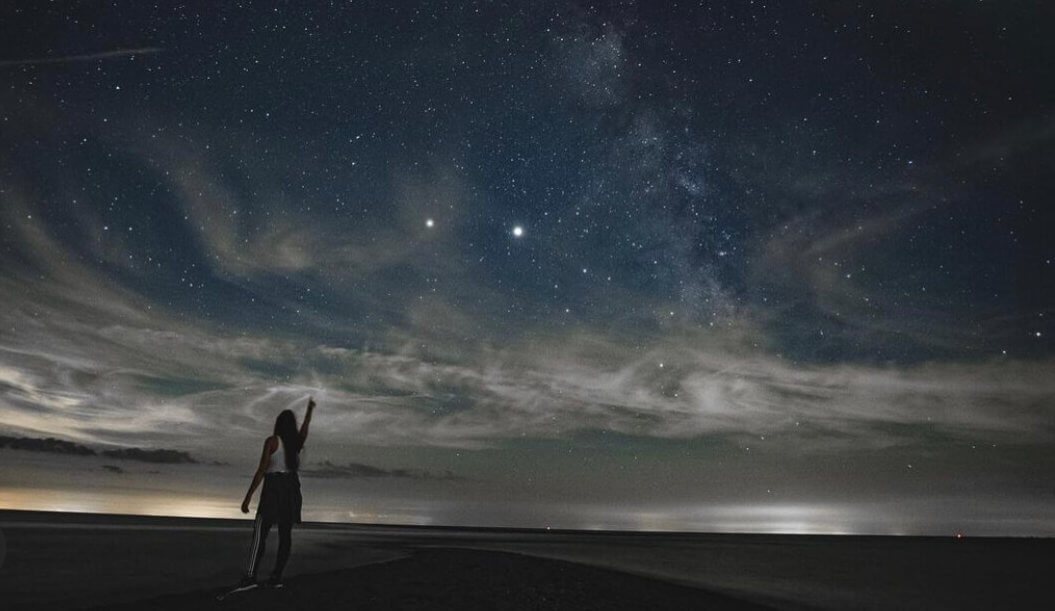
Jupiter and Saturn Conjunction. Manitoulin Eco Park (formerly Gordon’s Park). Photo by Caroline El Khoury
Where to see the Night Sky in Ontario?
There are two things you need for good stargazing: darkness and clear skies. If you have a lot of light pollution (even a full moon can be too much light) or if the night is cloudy, your chances of seeing the stars are much lower and it will be almost impossible to view the Milky Way.
What is the Milky Way?
Nearly everything we see in the night sky with our naked eye is part of a spiral galaxy called the Milky Way. Among other celestial wonders, it consists of Earth, all the planets within our solar system, our life-giving sun, our ethereal moon and millions of stars. It is our home in the sky and astronomers estimate that this incredible galaxy is more than 13 billion years old, among the oldest in the known Universe.
On very dark, clear nights when there is no light pollution, we can see the Milky Way stretched out across the sky in all its glory, including the hazy clouds of dust and gas that give our galaxy its name. If you know where to look, a bit of the neighbouring Andromeda Galaxy can also be observed. If you’ve never had a chance to gaze up at the Milky Way and the Universe beyond, you’re in for a special treat.
The best time to see the Milky Way in Ontario is in the summer months. During the winter, it is still possible to see parts of the Milky Way, but the way we are facing means we are seeing the shorter part of the galaxy, which is not quite as scenic. Face south on a dark and clear summer night and you’ll catch a glimpse.
Torrance Barrens Dark Sky:
One of the most accessible Dark Sky locations for those living in the GTA is the Torrance Barrens Dark Sky Preserve. Located just south of Bala in Ontario’s Muskoka region, the Barrens are about two hours from downtown Toronto. This is a great spot to come for a bit of stargazing as it is a relatively flat area that offers a nearly unobstructed 360° view of the cosmos.
Killarney Provincial Park:
As mentioned above, Killarney Provincial Park is a killer spot for stargazing. The park itself is absolutely gorgeous and you can stargaze right from your frontcountry campsite (or head down to the lake) as well as from the vast backcountry. But Killarney also has an observatory, interpretive summer astronomy programs and a telescope you can rent. It is located about 45 min from Sudbury. When I spoke to Jenna Hinds of the Royal Astronomical Society of Canada, she pointed to Killarney as her favourite place for observing the night sky! Scroll to the bottom of this post for Jenna’s stargazing tips.
Manitoulin Eco Park
Nestled in a forest setting on beautiful Manitoulin Island, Manitoulin Eco Park is a fantastic place to observe the night sky. You can camp or stay in one of the cabins. Formerly known as Gordon’s Eco Park, this park was the first commercial spot to be designated a Dark Sky Preserve by the RASC. The park holds astronomy events in the summer, as well as evening hikes to stargaze.
Point Pelee National Park
Those living in Ontario’s southwest can easily access the dark sky at Point Pelee National Park. Gazing out over Lake Erie from Ontario’s north shore is the perfect direction to see the Milky Way. The park is open until midnight on select nights during the year to allow for stargazing, typically coinciding with the new moon (ie moonless nights are best for stargazing). Visit their webpage for exact dates.
Lake Superior Shoreline
The vast, wild Lake Superior coast is one of the most gorgeous places in Ontario for hiking, camping and stargazing. The RASC designated Lake Superior Provincial Park as a Dark Sky Preserve but any of the parks along this coast offer stunning night sky experiences: Pancake Bay Provincial Park, Pukaskwa National Park and Neys Provincial Park.
South Eastern Ontario
South Eastern Ontarians have access to a few great spots for stargazing: Frontenac Provincial Park, while not a Dark Sky Preserve, offers great spots away from light pollution; the North Frontenac Dark Sky Preserve, just two hours from Ottawa and less than that from Kingston, has some of the darkest skies in southern Ontario; and the Lennox & Addington County Dark Sky Viewing Area is just 37 km north of Napanee but has clear views of the dark sky and hosts astronomy events all summer long.
Other places to stargaze in Ontario:
- Quetico Provincial Park (two hours west of Thunder Bay) has been designated a Dark Sky Reserve by the International Dark Sky Association and is an incredible place to visit.
- Over on the Lake Huron coast, the Bruce Peninsula National Park in Tobermory and the Bluewater Outdoor Education Centre in Wiarton are both RASC-designated spots.
- The vast and unpopulated regions of Northern Ontario all make for incredible viewing of night skies. Landsby has some fantastic Northern Ontario getaways that will give you access to unobstructed dark skies from the luxury of your accommodations.
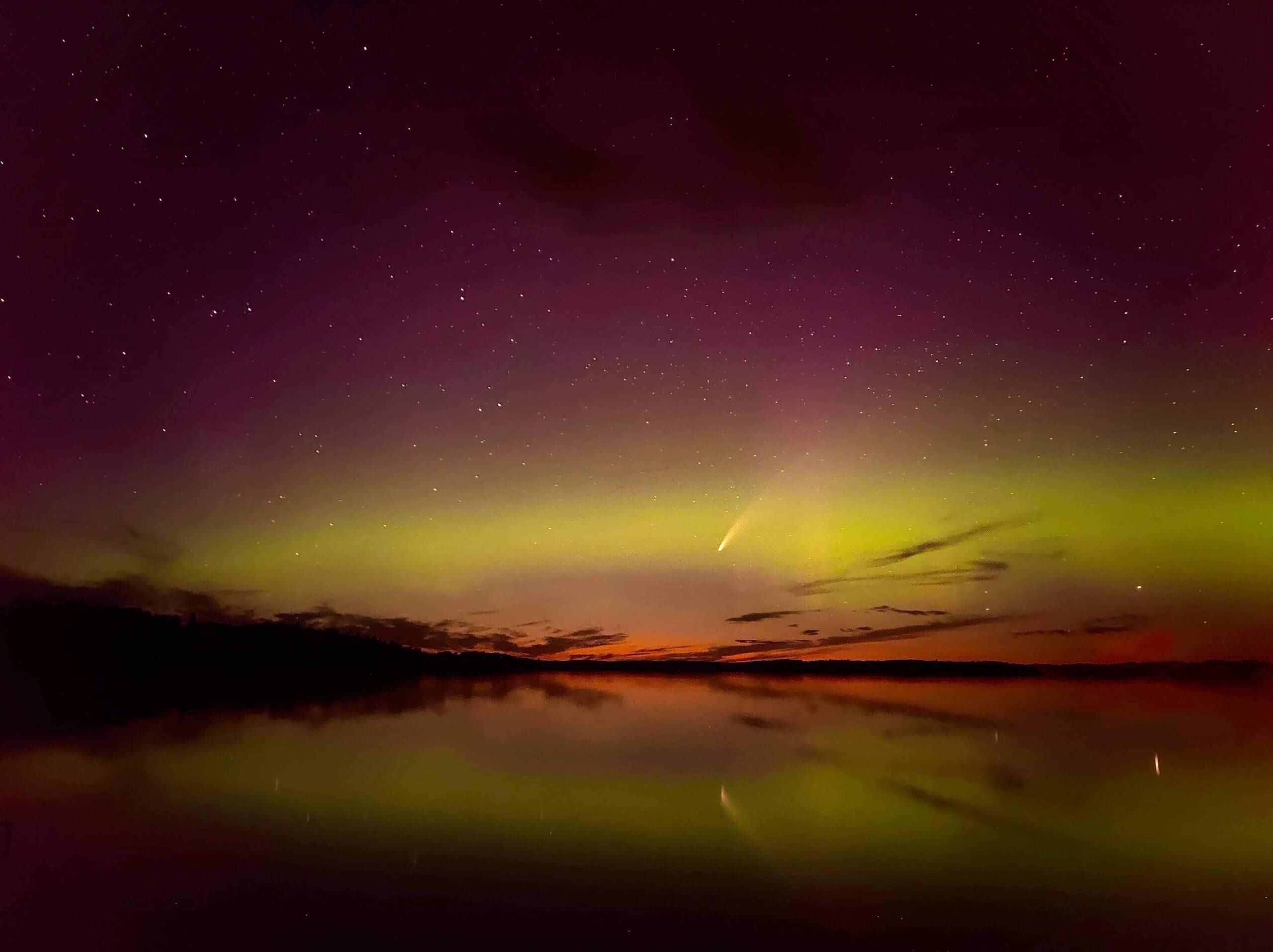
Northern Lights and NEOWISE comet at Ivanhoe Provincial Park. Photo by Mateusz Gortat, c/o Ontario Parks
Tips for Aurora Viewing & Stargazing in Ontario
If you’ve been dreaming of seeing the Northern Lights, you’ll be thrilled to know it is possible to see them in Ontario (as shown in some of the incredible photos throughout this post). So, how can you catch this celestial wonder with your own eyes? Here are some tips to give you the best chance to catch the Aurora in Ontario (as well as some general stargazing advice):
Look at the weather forecast — space weather that is!
The Aurora Borealis actually starts on the sun when magnetic storms spit out cosmic rays and send them towards the Earth. It takes a few days to reach us so we often know a few days in advance that Northern Lights are possible. This is called Space Weather and it is important to look for big storms because, unlike places like the Yukon, the Northwest Territories and northern parts of the prairie provinces, Ontario is not under the Auroral Oval.
Why is this important? Well, most Aurora activity happens in those regions that sit within the Auroral Oval — they will have beautiful displays of light even during lower solar activity — but in order for the Lights to reach southern spots like Ontario, we need big solar activity.
Storms are measured by something called a K-Index, which sits between 0-9. The higher the index, the better the chance of spotting the Aurora in more southern regions.
Where in Ontario is best for Northern Lights?
Obviously the further north you go, the darker the skies and the better chance you have of seeing the Lights.
But as Jenna Hinds from the RASC says, “It is like whale watching. It’s not really about where you are, it’s about where the Northern Lights happen to be that night.”
Jenna says the most spectacular display of Northern Lights she has ever seen was from an airplane as she flew over Ottawa!
“Most people in Ottawa wouldn’t have noticed because the city is so bright, so the lights from the city would block it out. But from an airplane, you were level with these curtains of light. It was very lucky!”
So if the space weather forecast calls for a big solar storm and the Earth forecast calls for clear skies — get yourself to a dark sky location and hope for the best!
The next few years will be great for Aurora viewing!
The sun goes through an 11-year cycle: a few years of intense storms, followed by a few years of fewer storms. This is referred to as a solar maximum and a solar minimum.
“During a solar maximum, you get these really beautiful displays of the Aurora Borealis,” Jenna says. “We are just coming out of the solar minimum, which means the sun has been relatively uninteresting lately. But as we come out of it, there will be more solar storms and therefore more opportunities to see the Northern Lights and to get some really cool, beautiful shots of them doing their curtain dance over the earth.”
Great news for Ontarians looking to see the Northern Lights!
Summer or Winter: what’s the best time to view the night sky?
The hardest thing to contend with when it comes to night sky viewing is the weather. A cloudy winter sky will be just as disappointing as a cloudy summer sky. That being said, each season does have positives and negatives, Jenna says.
“In the summer, the trade off is that you have to stay up until midnight to be able to see good dark skies and they only last for about four hours before the sun comes up again,” she says. “But it’s warm and relatively pleasant.”
In the winter, “the sun sets at about 5 or 6 and it stays dark for a very long time. The cold weather means that the atmosphere is really calm so you get really really good views, but it gets very chilly so you have to be very well prepared.”
Jenna says her favourite season is the fall because the sun sets at a reasonable time, there are few to no bugs and the temperature is not yet too cold.
Spring is great as well…until the bugs show up!
Face the right way!
If you want to see the Milky Way in the summer, the best way is to face south. “South is where all the cool stuff is,” Jenna says. “The Milky Way is there, the planets are there, the moon is there.”
But for the best chance to see the Northern Lights, you should face north.
Get in the habit of looking up!
Although Jenna’s favourite spot to observe the night sky is at Killarney, she says the BEST place to go is the place where you are — don’t wait for special occasions, but head out to a dark spot and look up. Anywhere outside the GTA and away from towns, ski hills or arenas is a good place.
But even in the city, there are places to go for some darkness. Living in Toronto, Jenna often finds herself at Cherry Beach, which is a great spot because you’re guaranteed darkness in half the direction as you look towards Lake Ontario.
“It’s such a shame in the city how disconnected we are from the sky,” she says. “I wish more people had an opportunity to see the Milky Way. It’s just jaw-dropping!”
Don’t miss any Canadian Travel Inspiration! Sign up for our newsletter:
The form you have selected does not exist.




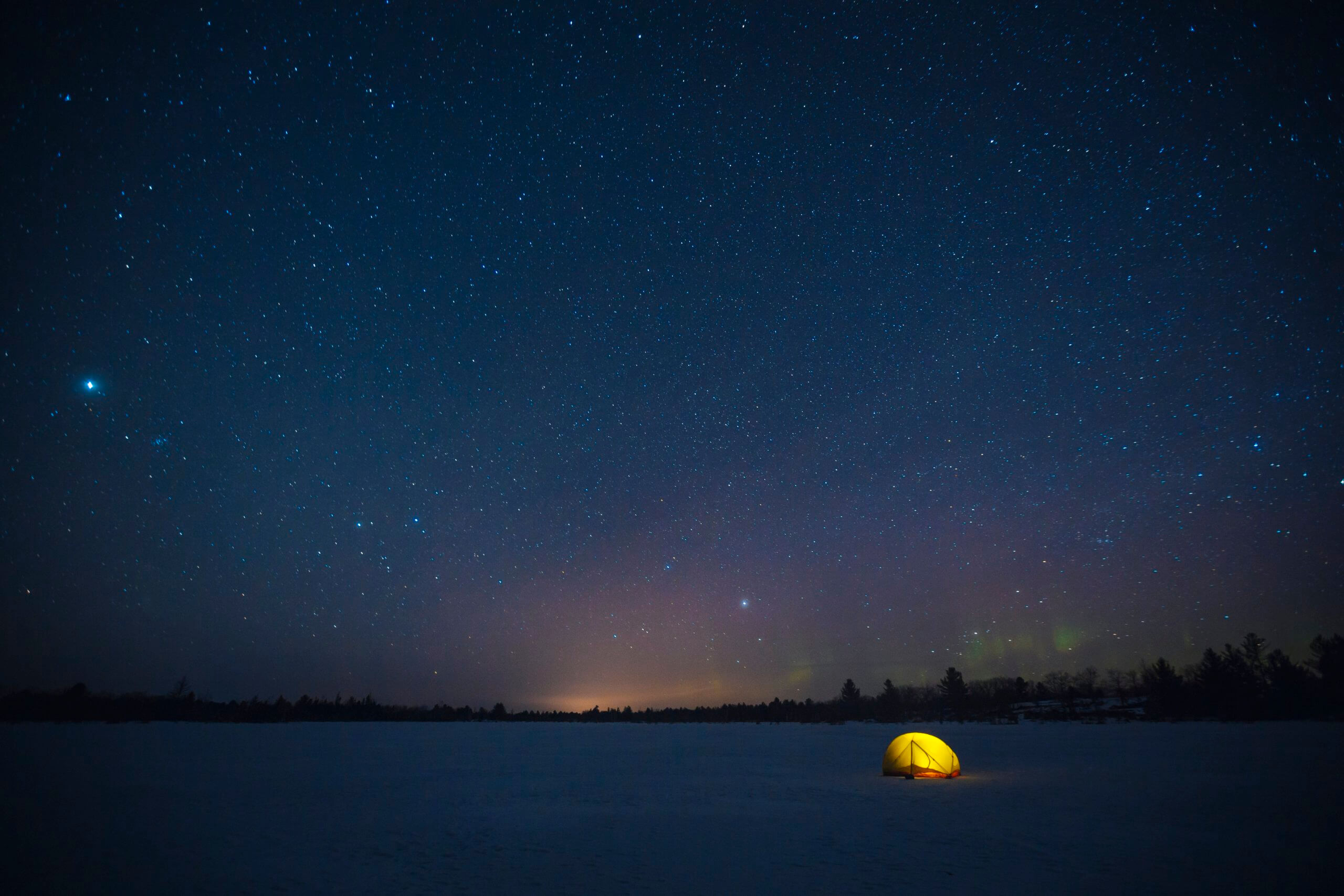
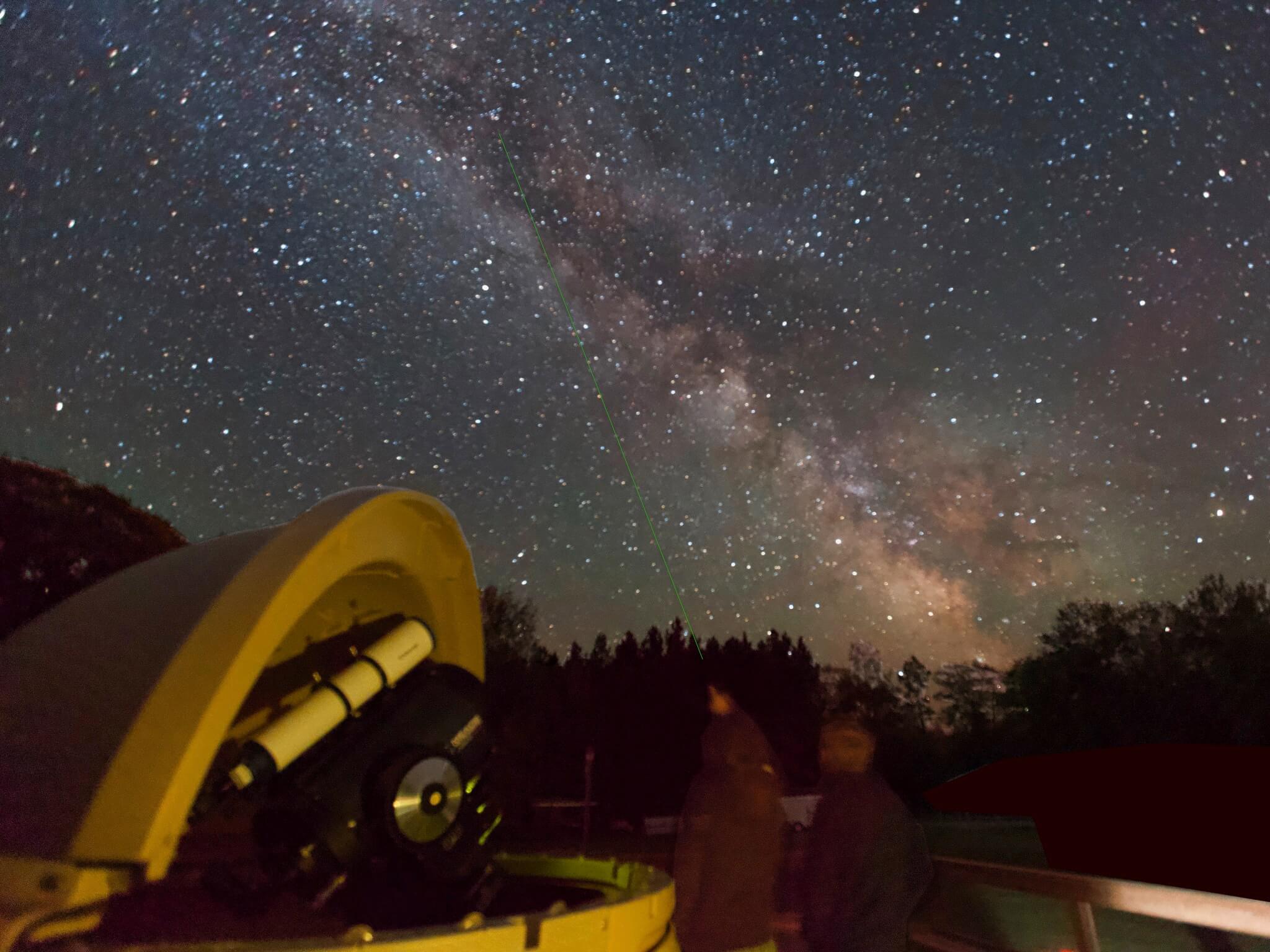
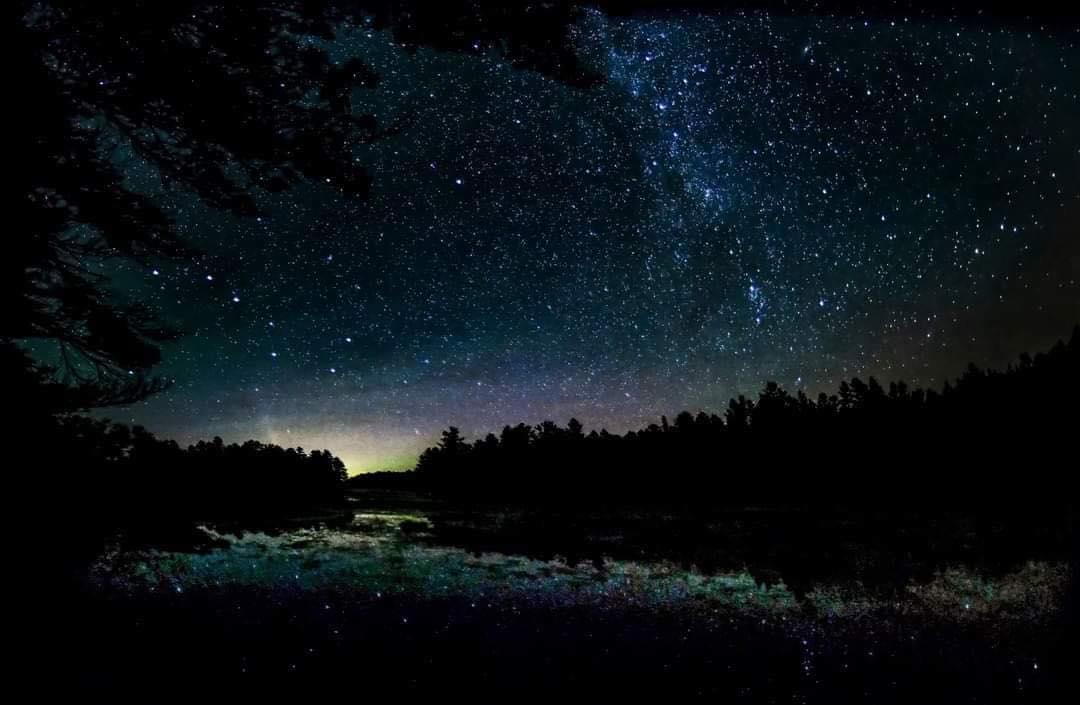
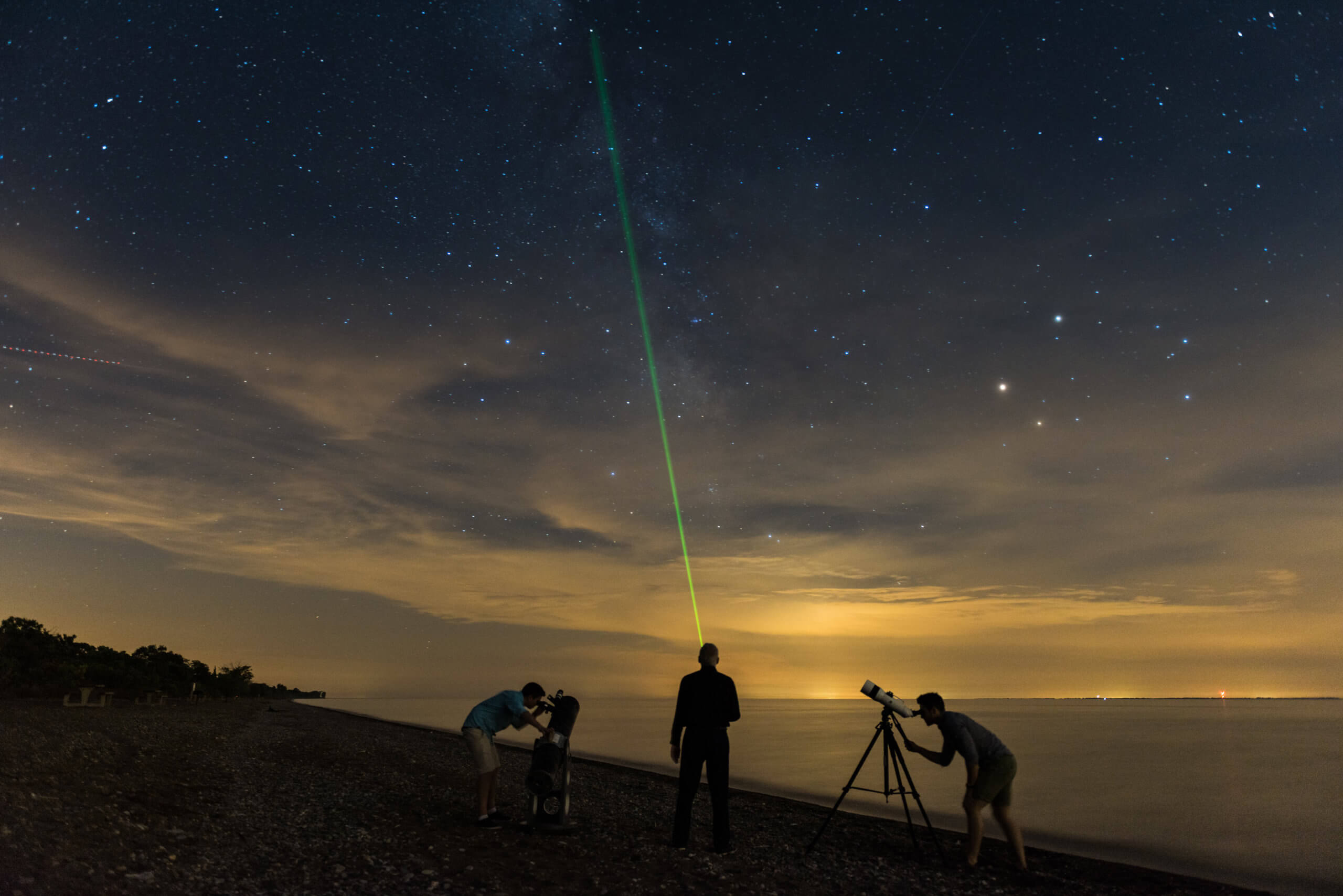
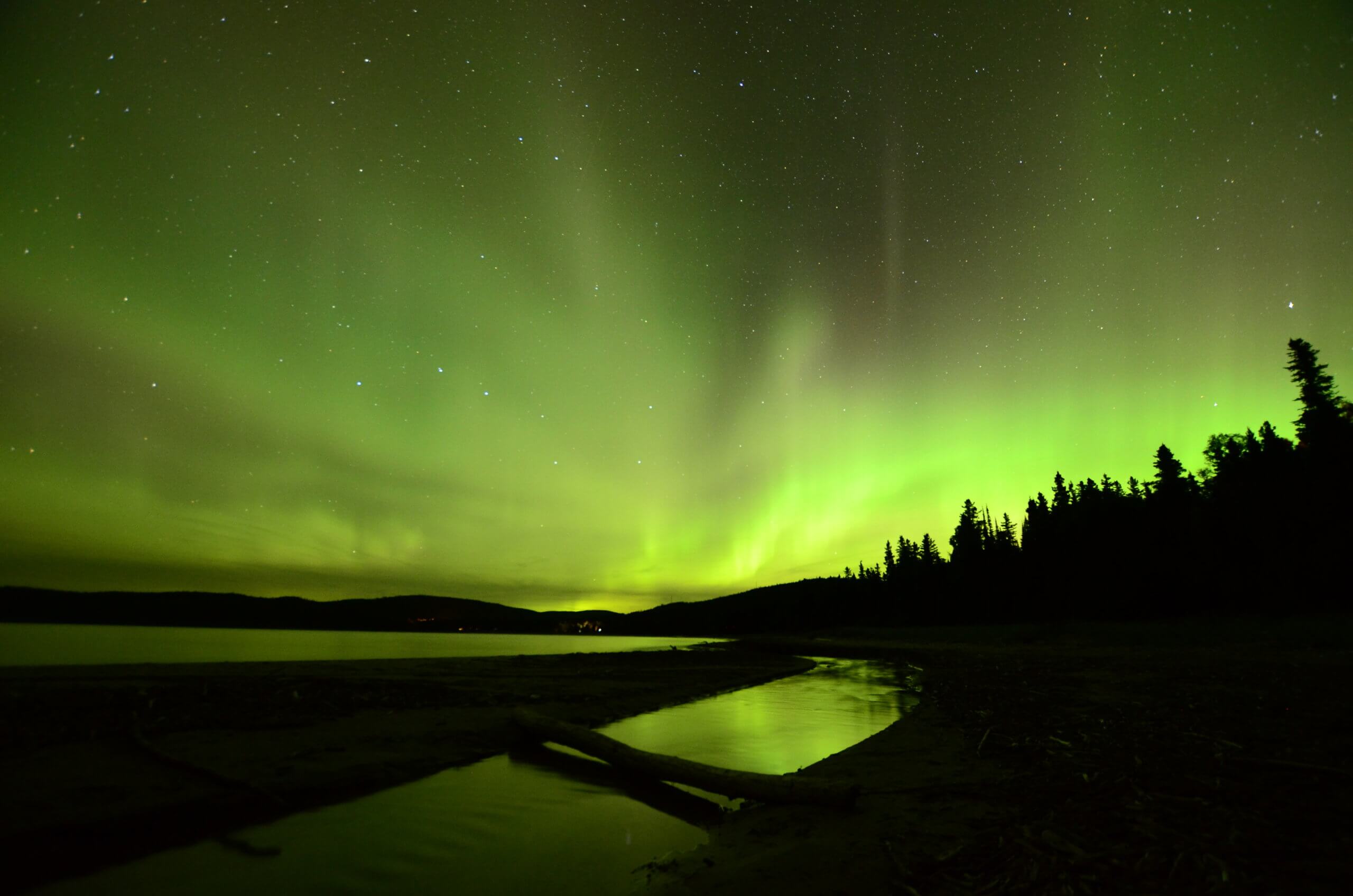


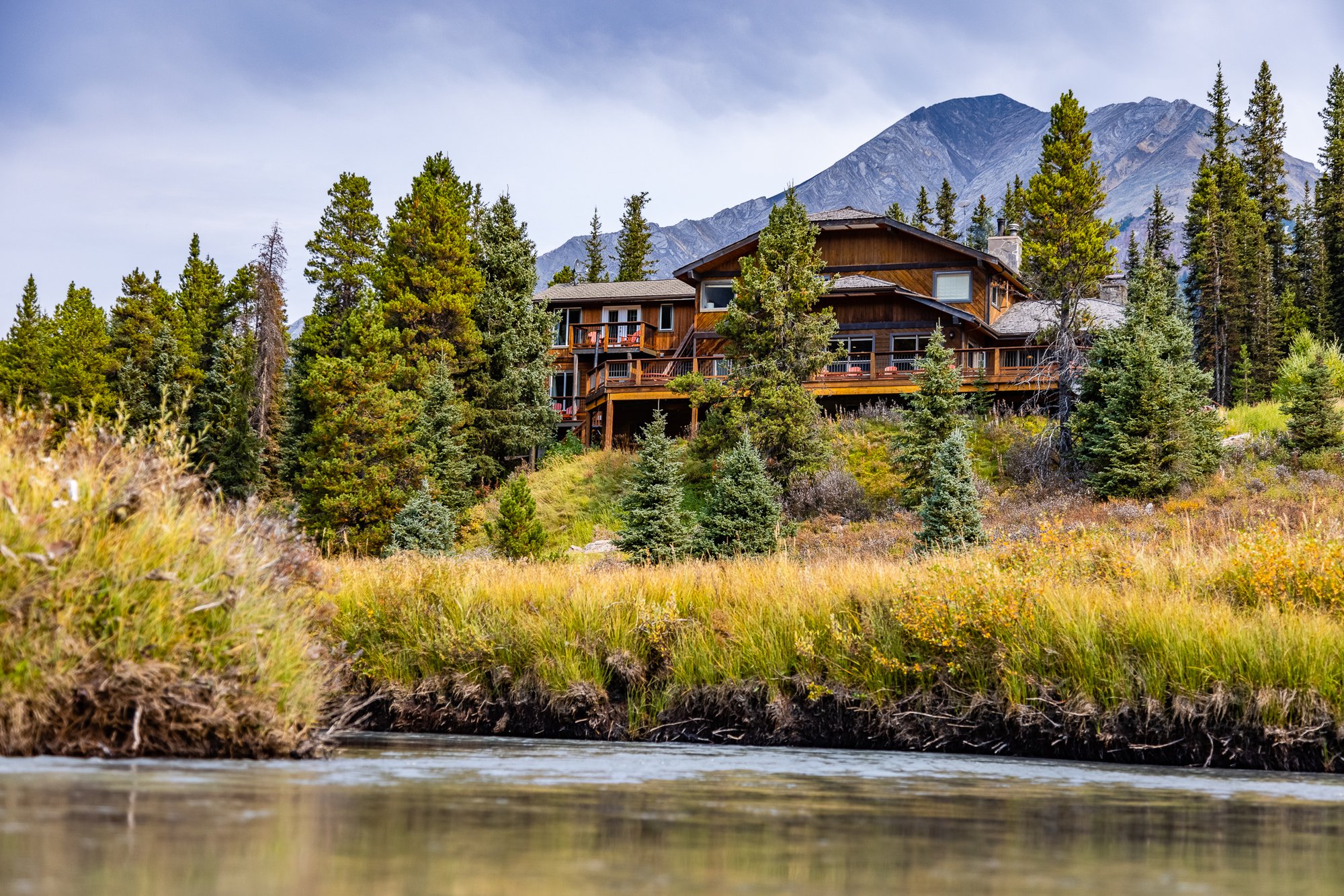
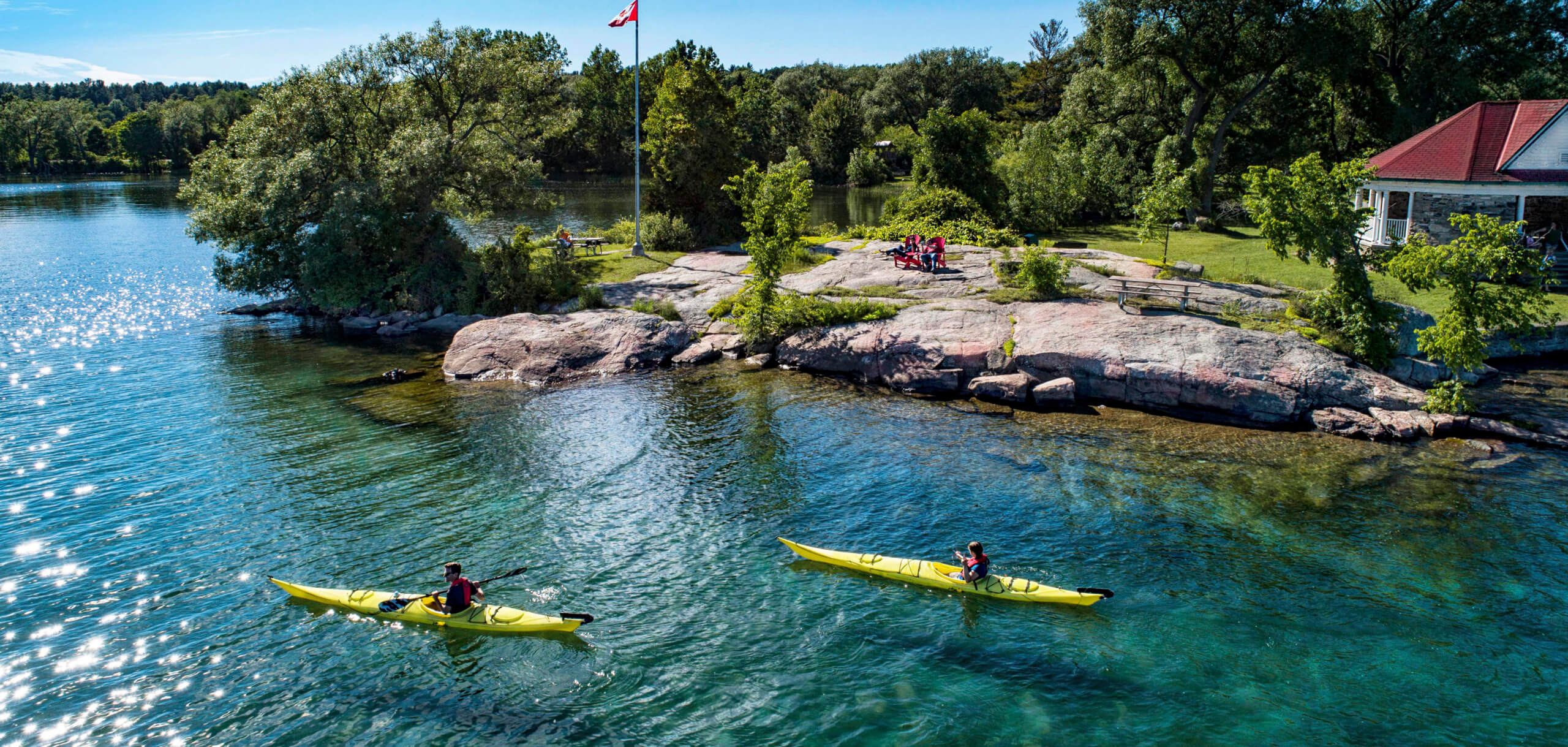
Pingback: The Solar Maximum Is Coming. What Does It Mean For Aurora Viewing In Canada? - Landsby